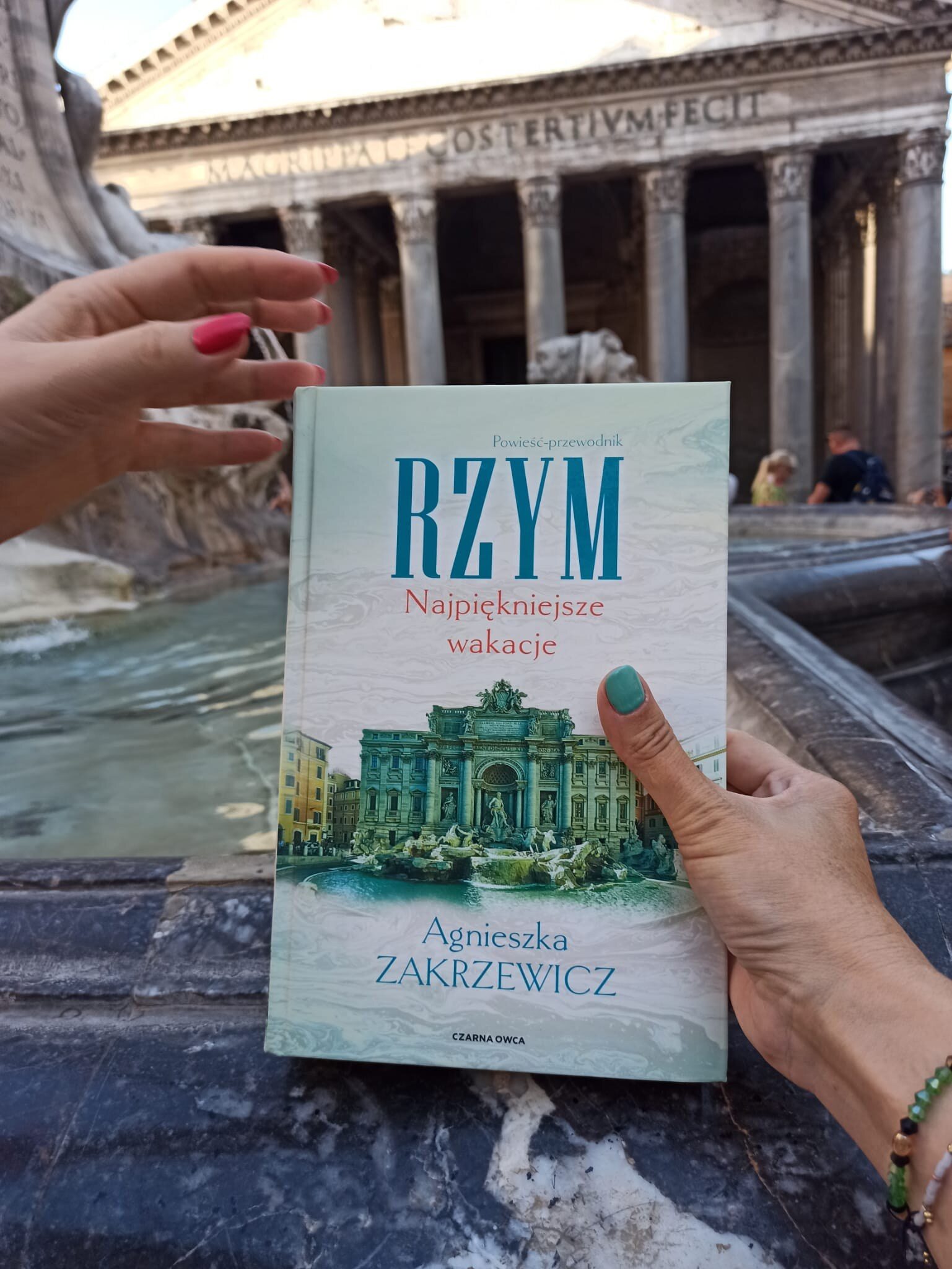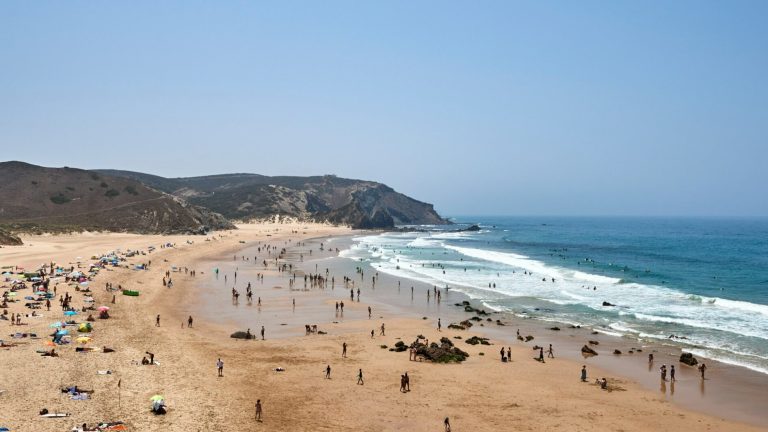Nero organized the best house parties in the history of the world

Agnieszka Zakrzewicz takes us on a journey through nearly three thousand years of Roman history.
– “Rome. The Most Beautiful Vacation” is a guidebook novel. Why did you choose this form?
Almost everyone asks me this question. It is not a new form in the literature. I reached for it willingly, so as not to bore the reader. Classic Rome travel guides contain laconic information. Archaeological guidebooks, history and art history textbooks, and source texts are often too difficult. The combination of professional knowledge of Rome and its monuments with an adventure plot and a romantic comedy seemed to me the best solution to reach a wider group of readers. In addition, the book can be read in three ways. From cover to cover, following Eliza’s adventures and the course of surprising events. Chapters that are already ready routes around Rome. Subchapters, each of which tells about a place or monument and is already a story in itself. So it is possible to read randomly. But those who started this way go back to the beginning to learn the whole story of Eliza.
– More than seven hundred pages, however, is a big challenge for the reader, especially nowadays, when everything has accelerated and time is a luxury.
– When my publisher, Paweł Księgi, heard that the book had so many pages, he said: “Great! People like thick books because at least they know what they’re paying for.” “Rome. The most beautiful holiday” is not a product of quick and one-off consumption. The book was excellently published by Wydawnictwo Czarna Owca. It has beautiful, luxurious artwork and the paper is of good quality. Although it is a brick, taking it in hand, we realize that it is light, handy and very easy to read. I was surprised myself, but that’s important for a book, especially of this size. This is not a book that, after reading, is put away once and for all, but one that will stand on the shelf to be returned to and consulted. With the publishing director of Black Sheep, Marek Korczak, we are confident that the popularity of this book will grow year by year as more and more readers read it and recommend it. As an author, I was also surprised by e-book, and above all by the ease with which it is consulted. It is a really excellent guide, which in this form is easy to take with you even on a trip to Rome with hand luggage. When I had the idea to write this book, I was convinced that it would be a much more modest work. In the course of writing, it turned out that Rome cannot be described any shorter… And this is only half, if not one third, of what can be said about the Eternal City.
– So how do you advise visiting Rome? What to see? Which monument do you recommend the most?
– All the places and monuments that I describe in the book are among my favorites and are worth recommending. That’s why I chose them and described them. Each of them has an amazing story worth knowing. By marking the places mentioned in the chapter names on the map, you can create ready-made routes for Roman walks. Eliza and her Roman aunt visit the Eternal City in seven days and in my opinion, her vacation is the perfect Roman chillout. Rome is worth visiting at ease, not in a hurry.
“Rome. The most beautiful holidays” is a summer book, because then you can read it calmly, taking a walk around Rome in your imagination, and using the Internet to see the monuments and places that I describe. This way you can plan your dream Roman holiday. For trips to Rome, however, I advise you not to choose the hot Roman summer, but preferably the period from mid-September to mid-December and from mid-January to mid-July at most. “Rome. The most beautiful holidays” is also a book with which you can enjoy sunny Roman holidays all year round, especially when it is raining or snowing outside. Due to its beautiful edition, it is an excellent gift book. And the e-book is definitely worth having with you when visiting Rome.
– In your book, you not only show us around the Eternal City, but also take us on a journey through nearly three thousand years of history, talking about famous historical figures and artists. We can read many interesting anecdotes about them and learn a lot about their lives.
– Yes, the subject of my book is the nearly three-thousand-year history of Rome, and the main character is the city itself. So I couldn’t omit the people who have lived here over the centuries, built it and created its extraordinary atmosphere. So I am talking about Romulus and Remus, Caesar, Octavian Augustus, Marcus Agrippa, Mark Antony, Cleopatra, Nero, and also about Sixtus IV, Julius II, Sixtus V, Urban VIII, Raphael, Michelangelo, Bernini and Borromini, Domenico Fontana, Giacomo della Portie, Caravaggio and many others. In the background, there are many stories of women and the theme of their role in a patriarchal society over the centuries. However, this is not a book with historical ambitions, many opinions about these characters are personal judgments.
– You seem to have quite a lot of sympathy for Nero, although you say he was a despotic satrap, fratricide, matricide, wife killer, multiple murderer, degenerate, pervert, megalomaniac, dangerous madman, liar and coward…
– In recent years, the assessment of this historical figure has changed. I grew up on Sienkiewicz’s myth that it was Nero who set Rome on fire. Modern historians and researchers, however, come to the conclusion that the outbreak of fire in 64 AD was most likely the result of an accidental fire in the Circus Maximus, from where it quickly spread throughout the city. Nero returned from vacation in Antium to save them. He opened his gardens to the people. After the fire, he rebuilt the city, introducing the first fire safety rules. Yes, on this occasion he seized huge areas on which he built his Golden House. The black legend of Nero was created by ancient historians and has been consolidated over the centuries. Henryk Sienkiewicz contributed to it by writing Quo vadis. I am not a historian to judge Nero. Without a doubt, he was a tyrant, a criminal and a populist. However, reading a lot about him, I found his character very tragic. Modern psychologists would explain some of his misdeeds by pointing to an unhappy childhood, brutality of his father, conflict with his mother Agrippina, who dominated her underage son and wanted to subdue him. I think Nero was a great artist. Today, he would probably be a famous rock star. We owe him a lot. His Golden House was a marvel of art. If Renaissance artists hadn’t discovered it by accident, entering its ruins as if into caves to copy frescoes painted by the ancient painter Fabulus, and then reproduce them as “grotesques” in Renaissance palaces, our art and culture would be poorer. Besides, Nero organized great parties at the Golden House. Probably the best house parties in the history of the world…
– You write that the ancient Rome of the emperors has been devoured and recycled, and a new, baroque Rome of the popes has been built on its ruins. Which popes do you think served Rome the most?
– The list would be very long. Each of the popes tried to leave their mark on Rome. They often outdid each other in their urban and architectural visions and in patronage of the arts. I can’t list here all the things I wrote about in the book. I will mention only the most important ones, or rather my favourites. Sixtus IV owes the construction of the Sistine Chapel, the Sistine Bridge, St. Ducha, and he also donated the first art collections to the city (including the Capitoline Wolf), which gave rise to the collection that was the nucleus of the Capitoline Museums. Giuliano della Rovere, or Julius II, nepot of Sixtus IV, who took his papal name from Julius Caesar, turned imperial Rome into papal Rome. It is to him that we owe the beginning of the construction of the new Basilica of St. Peter, and that today we can visit the Vatican Museums, because after ascending the papal throne, he moved his valuable art collection to the Vatican, which gave rise to the Pope’s Museums. We owe the rearrangement of Rome to Sixtus V. It was he who ordered the Egyptian obelisks to be moved and decorate the squares with them, as well as to place the statues of St. st. Peter and Paul, patrons of the city. It was during his pontificate of only five years that Giacomo della Porta and Domenico Fontana built the dome of St. Peter, designed by Michelangelo. I will also mention Urban VIII and Alexander VII, great patrons of Giovanni Lorenzo Bernini. During the pontificate of the first, the new basilica of St. Peter, during the second pontificate, a magnificent colonnade was built on St. Peter.
– You describe the stories not only of emperors and popes, but also of great artists. Which of them is your favourite?
– For years as a journalist and foreign correspondent I have been writing about the Vatican and also about Rome, so it was familiar territory for me. However, I was happy to use my knowledge of art history for the first time, writing about great artists. I don’t have a favorite artist though. The genius and talent of Michelangelo, Raphael, Caravaggio, Bernini, Borromini, della Porta, Fontana is fascinating. But also less known artists fascinate me. The Eternal City is a great theater of art, where different styles and the greatest geniuses confront each other. Rome is the world’s largest open-air museum with cars driving around. If it wasn’t for this Roman chaos, din, mess and dirt, as well as increasing heat, it would be a wonderful city…
– Well, reports of a heatwave in Italy are very worrying. So Rome is not a city for summer holidays?
“He never was. From mid-July to the second half of August, Rome was always empty. In Ferragosto, which is August 15, it was sometimes difficult to find an open bar or grocery store. But that was more than a quarter of a century ago when I fell in love with this city. Back then, staying in an empty Rome in the summer was fun for a foreigner interested in art and history. During the summer, the temperatures in this city were always high. Modern meteorologists suppose that when on July 18, 64, a fire broke out in Rome, which consumed the city for six days, the temperature reached 39 degrees C during the day. However, now the climate is clearly changing and visiting the stone city at these temperatures and tropical humidity for self-torture. This season, tourists have found a new photographic attraction – namely thermometers that show the outside temperature at pharmacies. Green, illuminated crosses (the hallmark of pharmacies) with the numbers 41 degrees C appeared in the photos on social media. So Rome is a very holiday city, but not for a summer vacation. Holidays here last all year round for tourists, and the best month for a family visit is the winter school holidays, and many Poles choose this period more and more often. This year in February the sun was shining and it was very warm.






